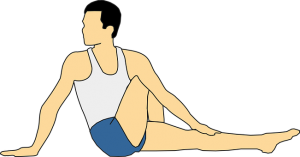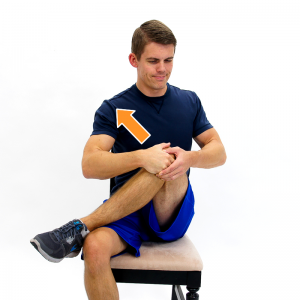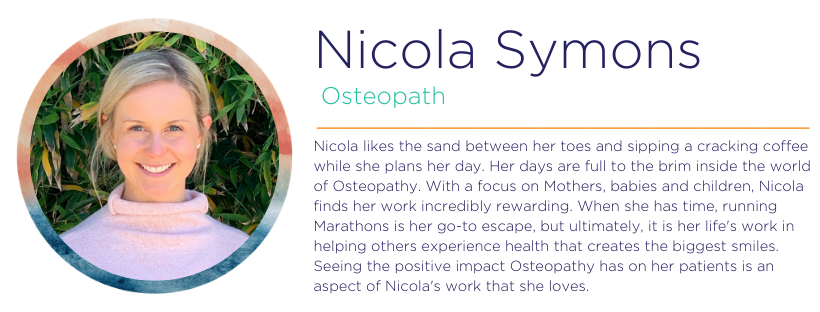Are you able to run without joint pain and niggles? Are you confident with running and exercise? Do you believe your body can move well? Our Osteopath Nicola is here to help with information on common injuries, how to prevent them and keep your body moving!
As humans, we should thrive with motion and feel good whilst walking and doing other physical activities. If we can’t move well our body is suggesting something is ‘not quite right’ within our musculoskeletal system. Don’t be hard on yourself if you’re in a position that you don’t feel able to move as well as you’d like to. Everybody goes through pain but there’s hope and always a lot of support out there! So here we are, Osteopaths who are offering this help, advice, ongoing support and high fives.
I am grateful that I’ve had support over the years as I’ve definitely had a few bingles! Here are some common running injuries that present daily and that I’ve struggled with:
- Low back pain
- Knee and hip pain
- Plantar fasciitis and Achilles pain
- Pelvic pain
- Tripping over (complete accident, but left me very wounded)
Funnily enough, these were all occurring on my right side as I was rotated forwards and putting a lot more weight and pressure onto my right hip, knee and ankle. This was caused by a pelvic imbalance which made me feel like my right leg was slightly stronger and longer than my left.
Being an Osteo helps me diagnose and work this out myself, but I often find this in practice. It’s important our body is aligned and moving optimally. This preserves our energy and joint health as excessive loading on specific areas can lead to damage.
Other common running injuries include shin splints, plantar fasciitis, Achilles pain and tendon issues, stress fractures, muscle strains, breathing issues involving the diaphragm and general aches/niggles/twinges. All of these are common presentations within the osteopathic clinic.
WHAT CAN WE DO TO PREVENT THESE FROM HAPPENING?
Get your body checked out by a professional!
As osteopaths, we assess and treat all areas of the body (feet, knees, hips, pelvis, low back, shoulders and the neck.). We aim to restore musculoskeletal and postural balance, optimal joint and muscle movement and correct any underlying dysfunctions which may lead to issues in the future.
For example, my right knee used to drive inwards whilst running and I developed severe kneecap pain. This was an easy fix once I had my hip muscles, leg and ITB worked on to assure they were moving the way they should be. I then strengthened my quads and glutes with some basic Pilates moves which were really easy to do at home. I teach pilates and love to give patients some take home moves to give them control of their recovery and have some tools in case any pain returns
Warm-up
Warm-up with dynamic stretches and movements. I always find I run best after a pilates session as it stimulates all areas of the body so well. I start with hip and shoulder openers which I’ll demonstrate below!
Breathe Properly & Well
Abdominal breathing daily (filling your low belly up with air, not just your upper chest!) This is hard to do whilst running quickly, but breathing in through the nose and out through the mouth is a great way to start. I focus on my breath a lot and assure I’m not shallow breathing as this won’t send enough oxygen to our working muscles!
HOW CAN WE MANAGE OUR PAIN & INJURIES?
See a professional
Osteopaths treat and send you home with a thorough management plan which involves exercises/changes/tips that you can do at home to keep you well and assure your healing and recovery is the best it can be.
Stretch & rest when required
For runners knee, I’ve inserted some handy stretches below. They focus on the sides of the upper body, hip and leg.



THE IMPORTANCE OF MOBILITY, FUNCTION & ALIGNMENT
Musculoskeletal mobility, optimal function and alignment are very important! Osteopaths are absolutely obsessed with anatomy. We understand the movement patterns of the body and really enjoy working with them as they are what contributes to our overall health and wellbeing. Here are a few things we aim to do:
- Encourage blood flow, lymph movement, respiration, oxygen delivery and release endorphins
- Supply joints, muscles and organs with nutrients for functioning
- Decrease the risk of injuries and pains occurring from joints not moving adequately and muscles not activating properly
- Improve strength, stability, coordination, balance and proprioception
- Allow the body to maintain homeostasis and recover well when required
KEEP MOVING!
And if you’re not motivated to start running, there are a million types of ways to be active. From dancing, walking, hiking, gardening and laughing – they’re all good!
Geelong offers some great run groups to help with support and motivation. Geelong Run club runs weekly events as well as Parkrun. The Finishr is also a great option on a Sunday morning. I’ll hopefully see you there!

